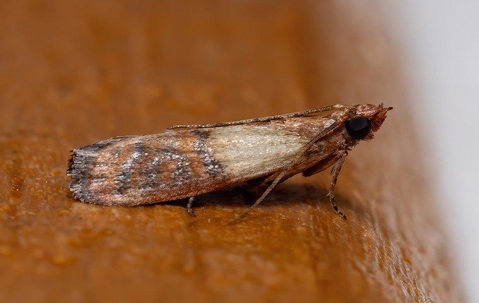When the urge to bake hits, a homeowner's first stop can be the kitchen pantry. Sugar, flour, and baking soda are the expected finds, not creepy crawlies. Nobody wants to find bugs in their food. Learn how to keep your Long Island pantry pest-free or simply contact Parkway Pest Services for professional assistance in removing pests.
Common Pantry Pests In Long Island
Knowing what kind of pests to look for can be an excellent first step towards curtailing the problem.
- Ant: Little ants are not just found in small hills outside; they can also be happy to come inside straight to the pantry in search of food. Ants have a hankering for the sweet stuff, so sugar or sugary substances like syrup are prime targets.
- Cigarette Beetle: Also known as the drugstore beetle or tobacco beetle, this brown beetle is roughly 1/8 of an inch long. These insects have compact, round bodies making them reasonably easy to recognize. This beetle can make a meal out of many things in the pantry: cereals, grains, snack foods, and cake mixes.
- Indian Meal Moth: A common pest found in New York pantries, this moth may grow up to around a half-inch. Colors of brown, copper, and gray may be seen in a pattern when up close, but from afar, folks may only be able to observe a gray or tan blur flying by them.
- Grain Beetle: Both the sawtoothed grain beetle and merchant grain beetle fall into this category of pantry pests. Physically, these species are quite similar, with brown bodies that are predominantly flat and usually do not exceed 1/8 of an inch in length.
- Weevil: These insects, while actually beetles, are pretty small. Primarily, this species' two types may be problematic in pantries: granary weevils and rice weevils. The granary weevil does not fly and is dark brown to black. The rice weevil can fly and features a similar dark color but has four contrasting spots on its back.
The Life Cycle Of An Infestation
Understanding how the problem begins is a good way to know how to keep your Long Island pantry pest-free. Infestations don't happen overnight, but sometimes it doesn't take much longer, so homeowners must be vigilant. The adult insect finds suitable food and then lays eggs in this edible nest. When the eggs hatch, the larvae can then feed on the food around them so they can get healthy, grow into adults, and begin the cycle all over again.
Tips To Prevent Pantry Pests
Ridding the home of unwelcome pests can become a real chore. Apply a proactive strategy to use prevention methods that can repel any pests actively seeking pantries in Long Island.
- Check The Chimney: It may seem odd, but some pests like pantry moths can get inside homes through chimneys. Have a flue guard or chimney cap properly installed. If there is a fireplace, putting in glass doors designed for high heat can further deter.
- Inspect Possible Purchases: Be sure to check every package thoroughly before buying during each grocery shopping trip. If picking up or receiving an online order, carefully turn over products to ensure there aren't any tears, openings, or potential pantry pests inside.
- Keep Food Out Of Reach: Use tightly closed containers to store food in instead of original packages. If there is enough space, consider storing some foods like oatmeal and flour in the freezer.
- Refuse Entry: Don't let any of these pests get into the pantry. Check window screens to see if there are any gaps. Seal any fractures or holes found in the exterior structure.
Help For Problematic Pantries
There's no need to worry over how to keep your Long Island pantry pest-free. Just reach out to Parkway Pest Services for prevention advice or help with an infestation. We offer a military discount and are Green Pest Control.

